
Contents










Spotlight · Written by Jang Hee-joo
Celebration of Faces
Andong International Mask Dance Festival
Gyeongsangbuk-do Province has maintained an enduring culture since ancient times and hosts a variety of cultural festivals.
For those curious about the lesser-known aspects of Korean culture, these events offer a great opportunity to not just learn but have fun.
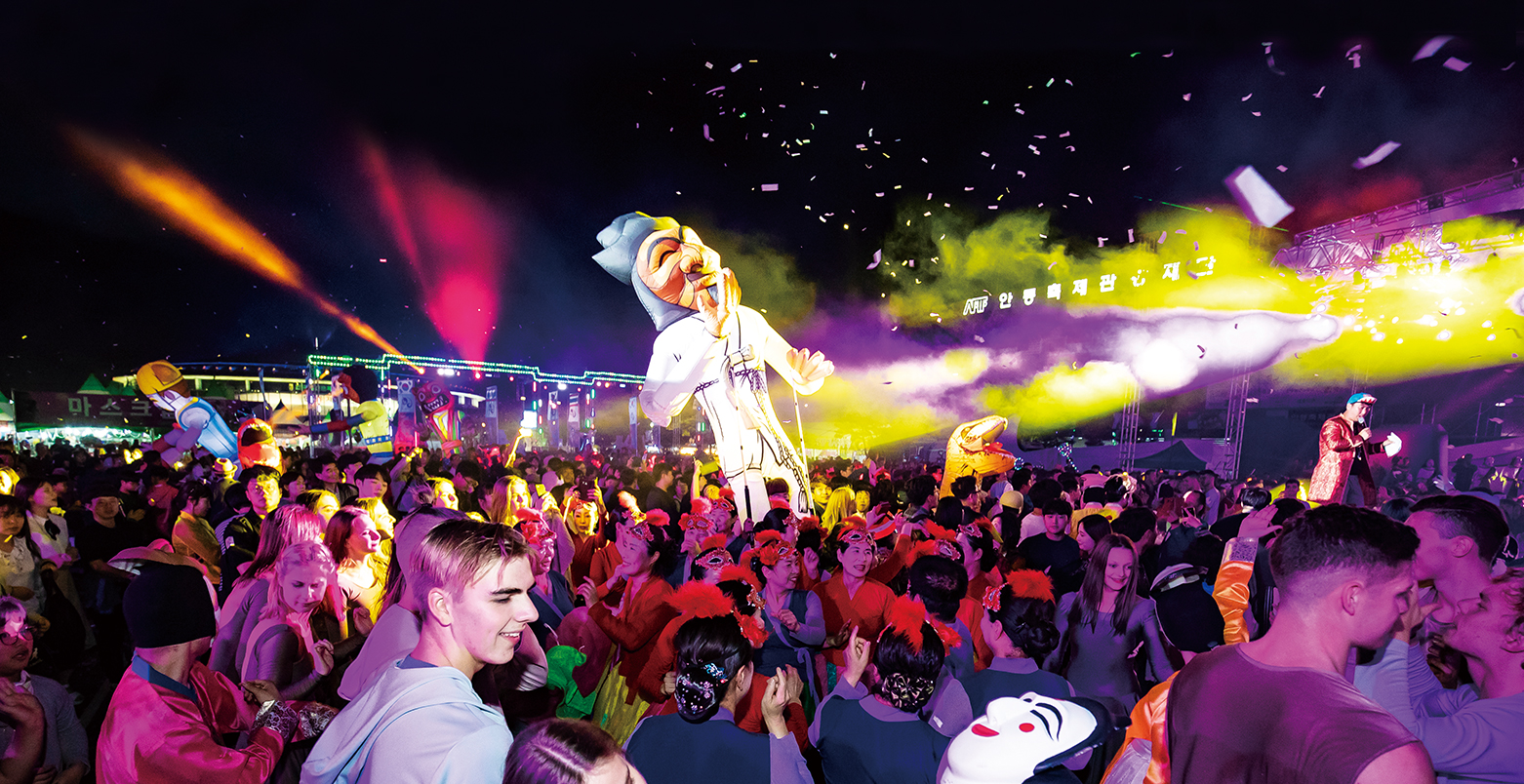
Festival Featuring Ancient Mask Dance
Talchum is a traditional Korean mask dance that dates back to ancient times but was officially recognized in the Joseon Dynasty era (1392-1910). The dance illustrates the paradoxical aspects of the ruling class of the time with satire and humor that provoked laughter in peasants. Among the many types of talchum, the favorite dance of laypeople, Hahoe Byeolsingut Talnori, has stayed true to its origin in Andong Hahoe Village by using a Hahoe tal (mask) for the performance. Made of wood, each mask has a unique facial expression that makes it difficult to tell if it is smiling or frowning, reflecting the life and culture of commoners in the past.
Stage Co-Created with Audience
The 10-day festival attracts more than a million visitors every year. Performers get the audience to participate in the performance by spontaneously talking to them, and the witty responses of viewers are part of the show. As the event’s reputation grows worldwide, an international team of folk dancers has spiced things up. Street parades, outdoor plays that incorporate a diversity of traditional Korean art performances and other creative drama plays enthrall audiences.
More about Andong International Mask Dance Festival ⟶
Gyeongsangbuk-do Province
Living History and Culture
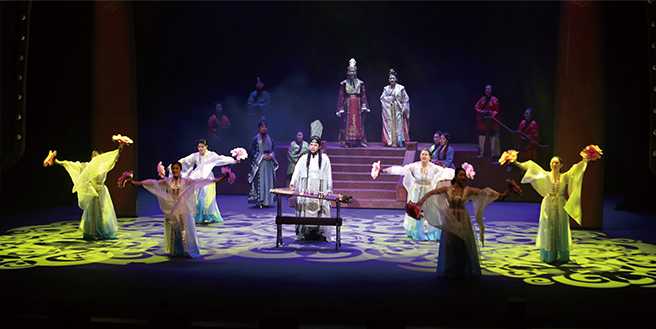
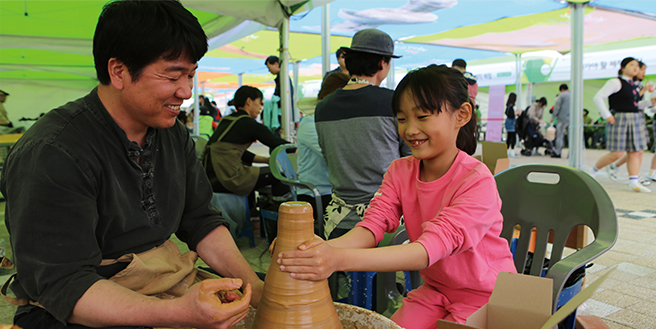
© Goryeong Daegaya Festival
Goryeong Daegaya Festival
/ April
Goryeong-gun County was the capital of Daegaya (a city-state in the ancient Gaya confederacy) that existed 1,600 years ago. Daegaya’s glorious history and culture was rediscovered in 1977, when ruins excavated in the county and vicinity gave significant clues to the city-state’s majestic culture and stimulated discussion of its history. The festival features Daegaya’s mythological origin story and allows visitors to explore its ancient history and culture.
The festival is run under the three themes of the past, present and future. Vivid images from the past are offered as well as interactive programs like archery, the making of gilt-bronze crowns and the playing of the gayageum (a traditional zither-like string instrument). The “International String Instrument Festival” features modern musical instruments being played with the gayageum together. A night trekking program offers a stroll around the serene ancient tomb at night with only the assistance of a lamp.
More about Goryeong Daegaya Festival ⟶
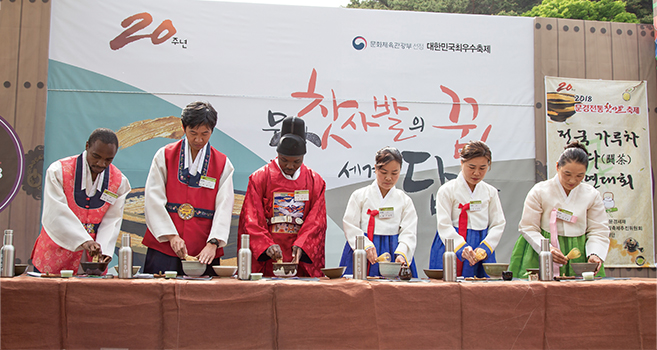
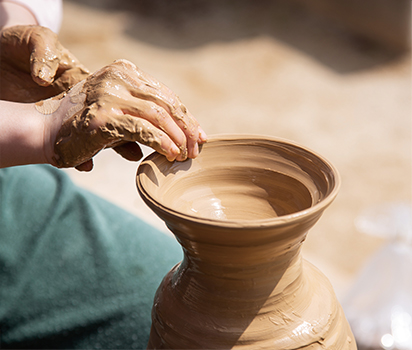
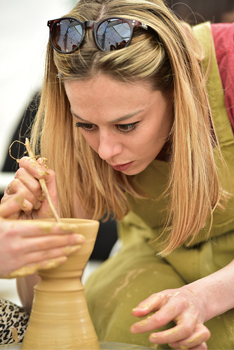
© Mungyeong CHASABAL Festival
Mungyeong Traditional Chasabal Festival
/ April - May
Mungyeong, Gyeongsangbuk-do Province, is known for exquisite ceramics, an important cultural heritage of Korea. Surrounded by mountains, the city’s abundant resources of firewood, water and clay are perfect for ceramics, and Mungyeong’s proximity to nearby provinces eases ceramics distribution through convenient transportation networks. The traditional method to make and bake ceramics is still used in the region and produces the finest quality of its kind in the country.
The Mungyeong Traditional Chasabal Festival offers a prime opportunity to learn about Korean ceramic culture and tradition. Under the theme “Rest, Contain and Walk,” the event marks its 21st edition this year and has seen annual improvement through the inclusion of more entertaining and engaging programs. This year, the festival will scrap its opening ceremony to offer more practical and visitor-centric programs.
“Craftsman Performance” is a new program at this year’s festival featuring a traditional tea ceremony and pottery-making programs by
artisans from the region. An auction will also entertain sale bids for works and staff at information booths can answer questions on Korean ceramics.
More about Mungyeong Chasabal Festival ⟶
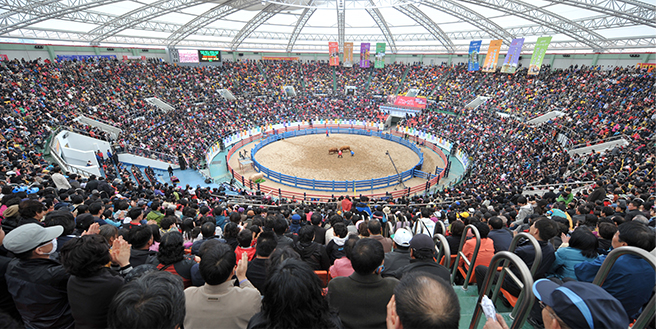
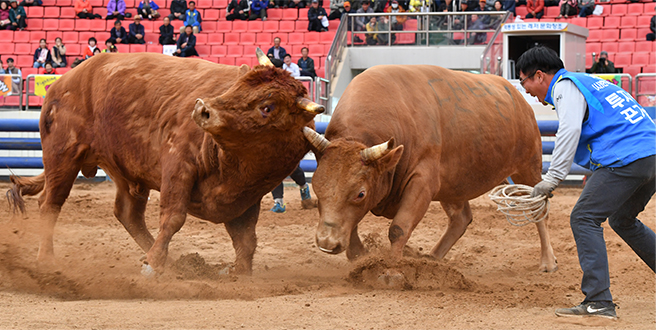
© Cheongdo-gun
Cheongdo Bullfighting Festival
/ April - May; Every Weekend
Cheongdo-gun County, Gyeongsandbuk-do Province, hosts the annual Cheongdo Bullfighting Festival every spring. Korean bullfighting dates back to long ago when agricultural culture became predominant on the Korean Peninsula, expanding from a simple form of entertainment for shepherds to a fierce competition among clans with bragging rights at stake.
A Korean bullfight has two bulls face off and push against each other’s head moaning and snorting, with the loser being the first to turn around and wander off. The techniques the bulls use in fighting are impressive, swiftly putting weight on a rival or unexpectedly attacking an opponent’s neck or side.
Battle bulls are selected and put through intense training to beef up their strength and fighting skills. To enhance endurance and muscular strength, they climb up and down rough mountain paths or rocky roads. They hone their skills by pushing their heads against logs or a pile of sand. The art of battle, coupled with the bulls’ intense training, makes for an exciting festival as well as a recurring event every weekend at the county stadium.
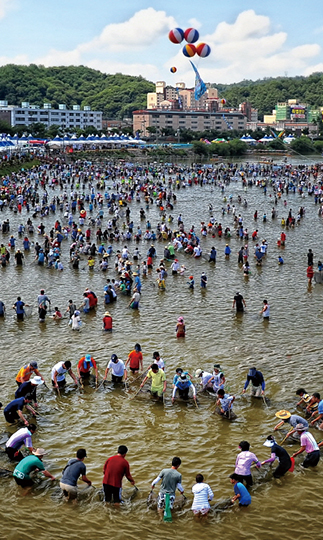
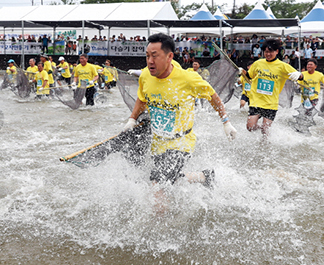
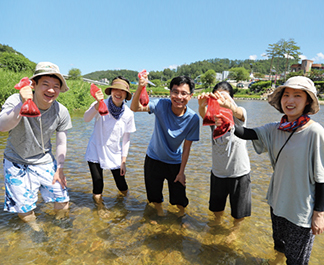
© VisitKorea.or.kr, Korea Tourism Organization
Bonghwa Sweetfish Festival
/ July 27 - Aug. 4
Nutritious sweetfish used to be a delicacy enjoyed by royalty. Such fish only live in pure freshwater, which makes the town of Bonghwa-eup in Bonghwa-gun County, Gyeongsangbuk-do Province, the perfect home for such fish since it has the cleanest water in Korea. The venue is along Naeseongcheon Stream with its cool and pristine air with programs like cooking fish on a grill after catching them with one’s bare hands.
In addition to catching sweetfish with bare hands, water activities like rafting or water rides are also available. With a range of exciting sports and entertainment, Bonghwaeup is the place to go this summer for all ages to beat the heat with cool water activities while enjoying delicious sweetfish.
More about Bonghwa Sweetfish Festival ⟶
Other Articles















